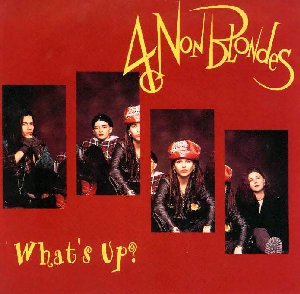Released in 1992, “What’s Up?” by 4 Non Blondes quickly became a defining anthem of the early 90s, resonating with audiences around the world with its powerful vocals, introspective lyrics, and infectious energy. The song’s timeless appeal lies in its ability to capture the essence of self-discovery, authenticity, and empowerment, making it a rallying cry for individuality and connection. In this extensive exploration, we’ll dive deep into the world of “What’s Up?”, uncovering its origins, dissecting its lyrics, and celebrating its enduring impact on listeners and the music landscape.
Setting the Stage: The Birth of “What’s Up?”
Written by Linda Perry, the lead vocalist of 4 Non Blondes, “What’s Up?” emerged from a deeply personal place of introspection and self-exploration. Perry’s raw and emotive vocals, coupled with the band’s dynamic instrumentation, created a powerful sonic landscape that resonated with listeners. The song was released as the lead single from the band’s debut album, “Bigger, Better, Faster, More!”, and quickly gained traction on radio stations and music charts worldwide.
Dissecting the Lyrics: An Introspective Journey
Let’s delve into some key lyrics from “What’s Up?”:
- “And so I wake in the morning and I step outside / And I take a deep breath and I get real high”
- These opening lines set the stage for the narrator’s journey of self-discovery and introspection. The act of stepping outside and taking a deep breath symbolizes a moment of clarity and connection with the world.
- “And I scream from the top of my lungs, ‘What’s going on?'”
- This iconic refrain serves as a rallying cry for authenticity and self-expression. The narrator’s question encapsulates a universal longing for understanding and connection in a world filled with uncertainty and confusion.
- “And I try, oh my God, do I try / I try all the time, in this institution”
- These lines reflect the struggle of navigating societal expectations and norms while staying true to oneself. The narrator’s relentless efforts to find meaning and purpose underscore the universal quest for identity and fulfillment.
Impact and Legacy: A Timeless Anthem of Empowerment
“What’s Up?” struck a chord with audiences upon its release and quickly became a chart-topping hit, earning critical acclaim and accolades. Its powerful message of self-discovery, authenticity, and empowerment resonated with listeners, making it an instant classic. The song’s enduring popularity has transcended generations, with each new wave of listeners finding solace and inspiration in its lyrics and melody.
Beyond its commercial success, “What’s Up?” has left an indelible mark on popular culture, inspiring countless covers, tributes, and references in films, TV shows, and commercials. Its iconic status as an anthem of empowerment and connection has solidified its place in the cultural zeitgeist, with new generations of listeners continuing to embrace its message of self-discovery and authenticity.
Conclusion: Embracing Authenticity and Connection
“What’s Up?” by 4 Non Blondes is more than just a song; it’s a powerful declaration of identity, connection, and empowerment. Through its raw vocals, introspective lyrics, and infectious energy, the song invites listeners to embrace their true selves and connect with others on a deeper level. As the years pass and the world evolves, “What’s Up?” remains a timeless reminder of the enduring power of music to inspire, uplift, and unite us all.








